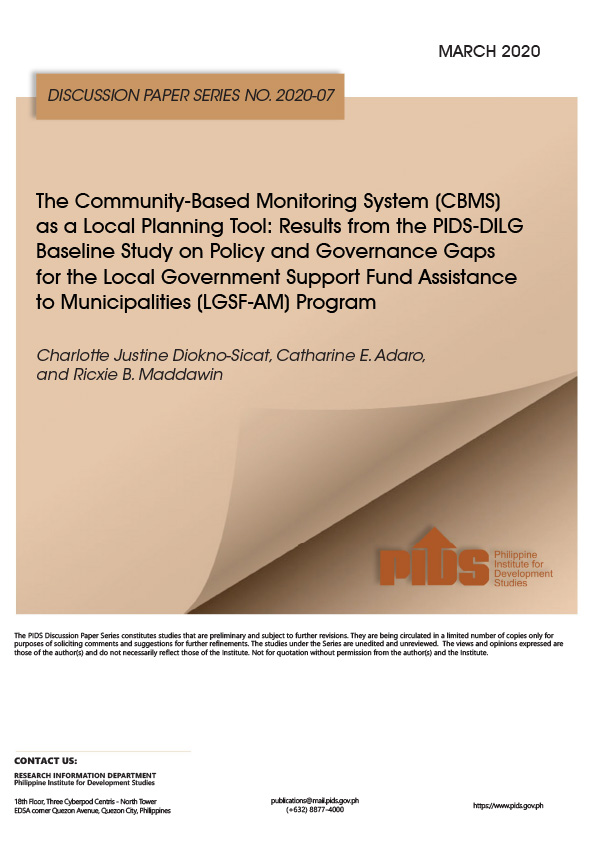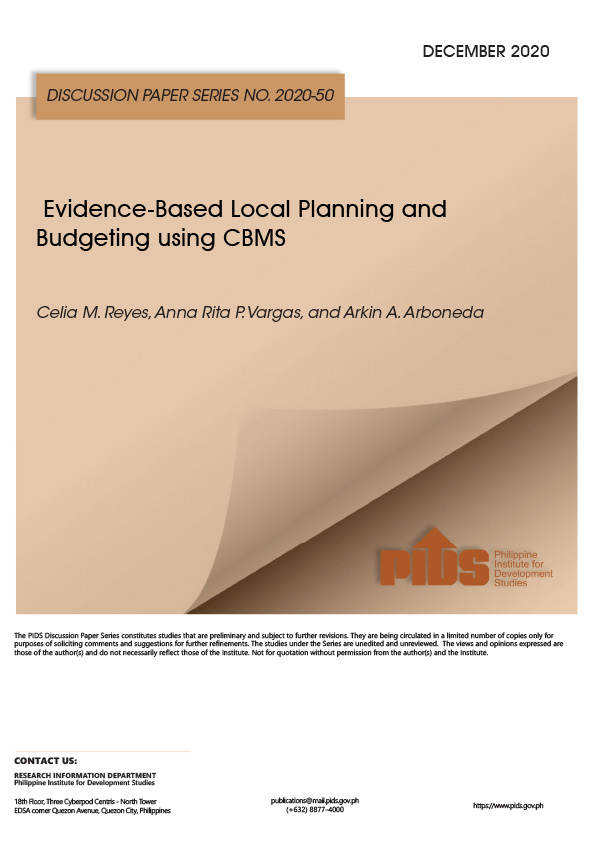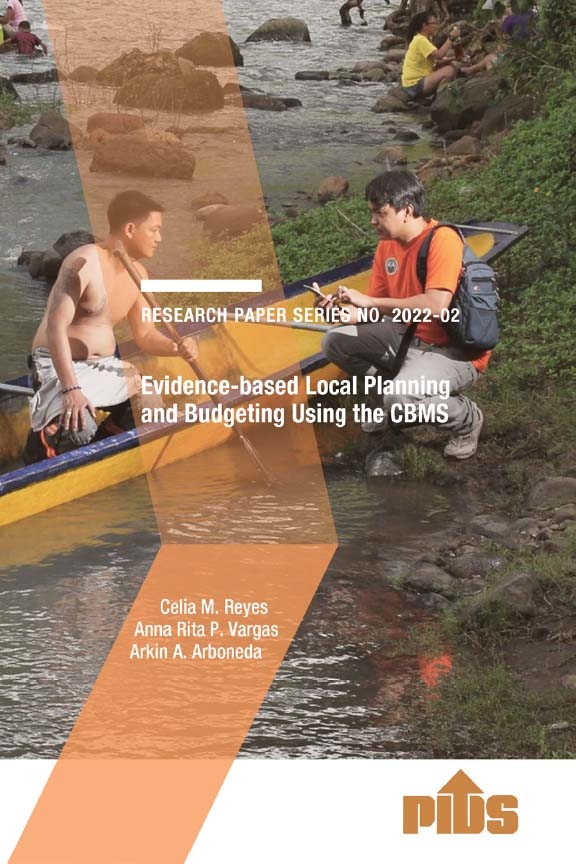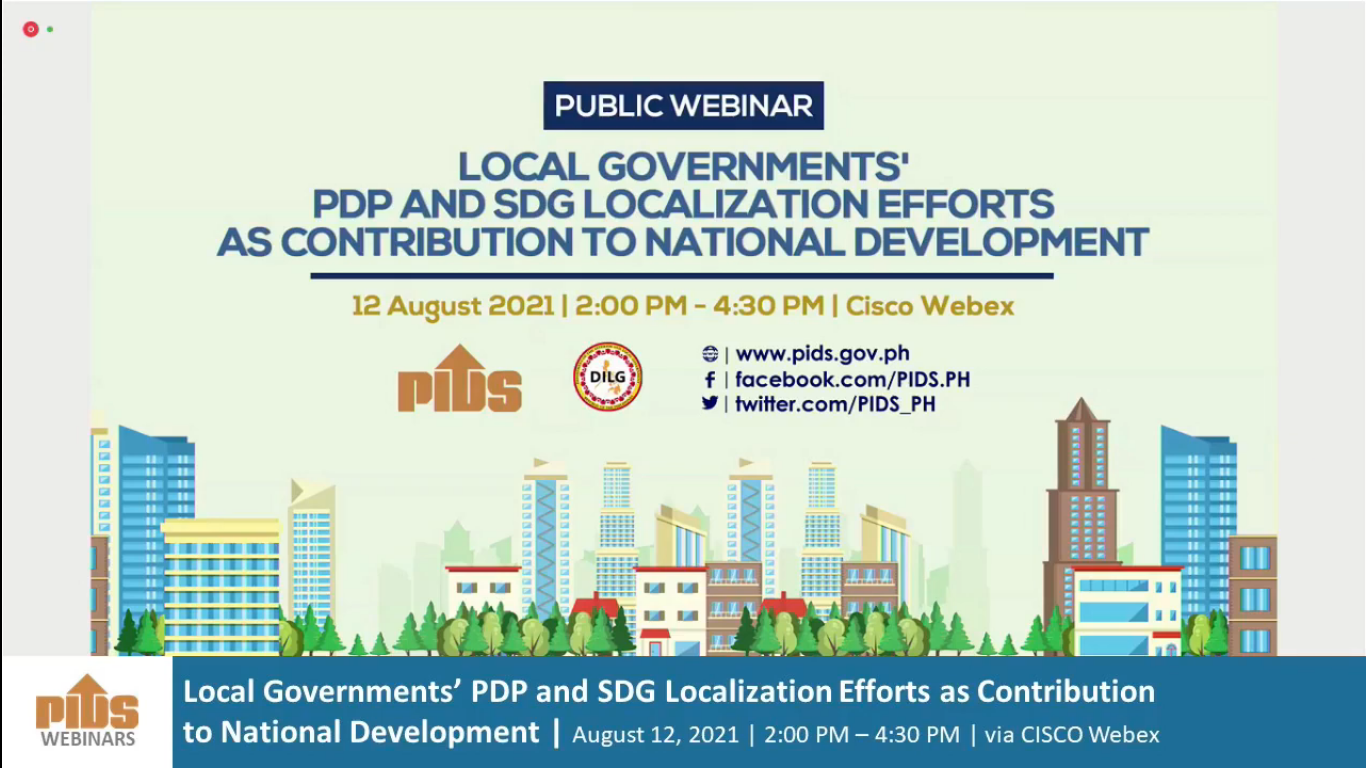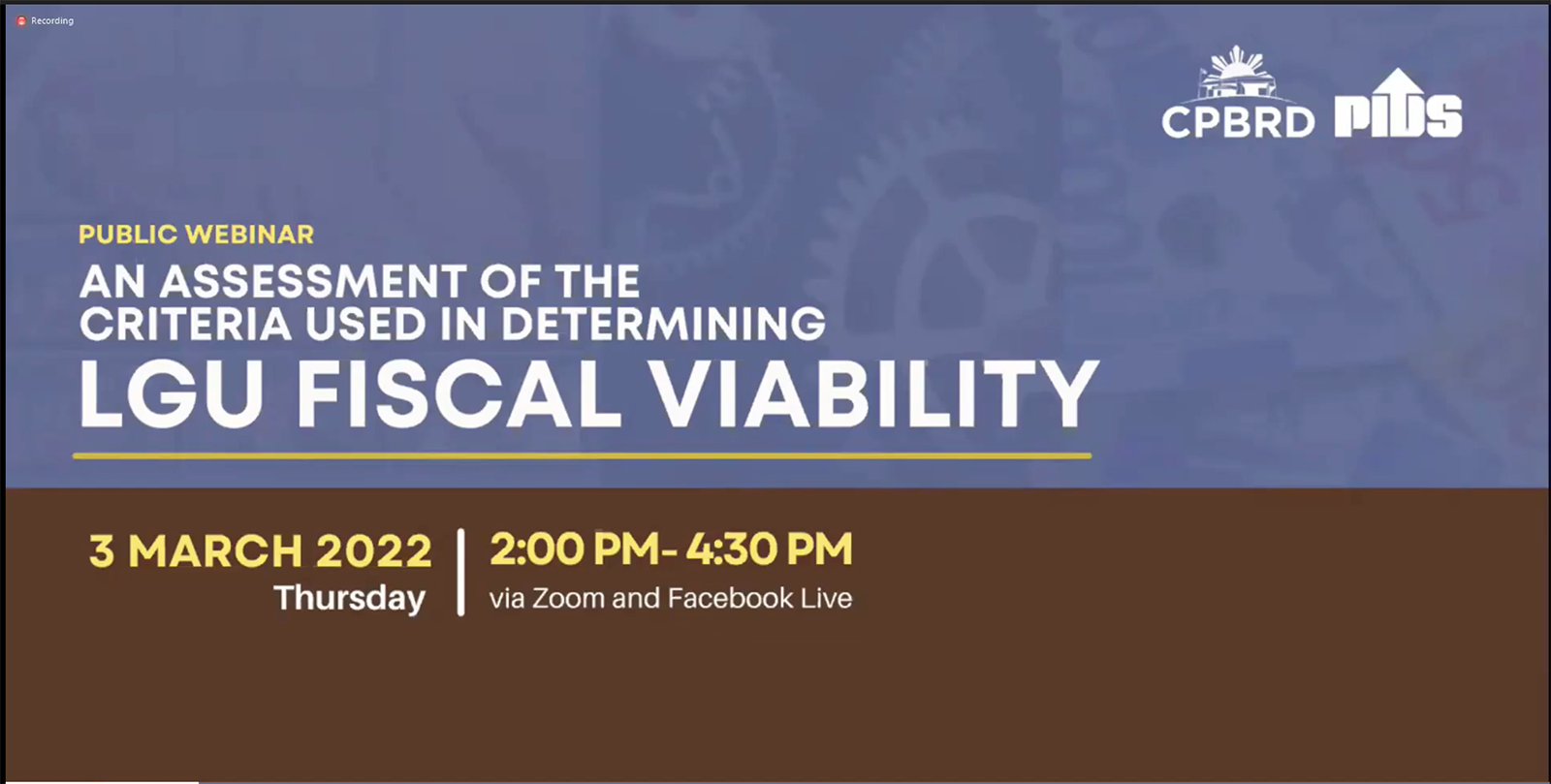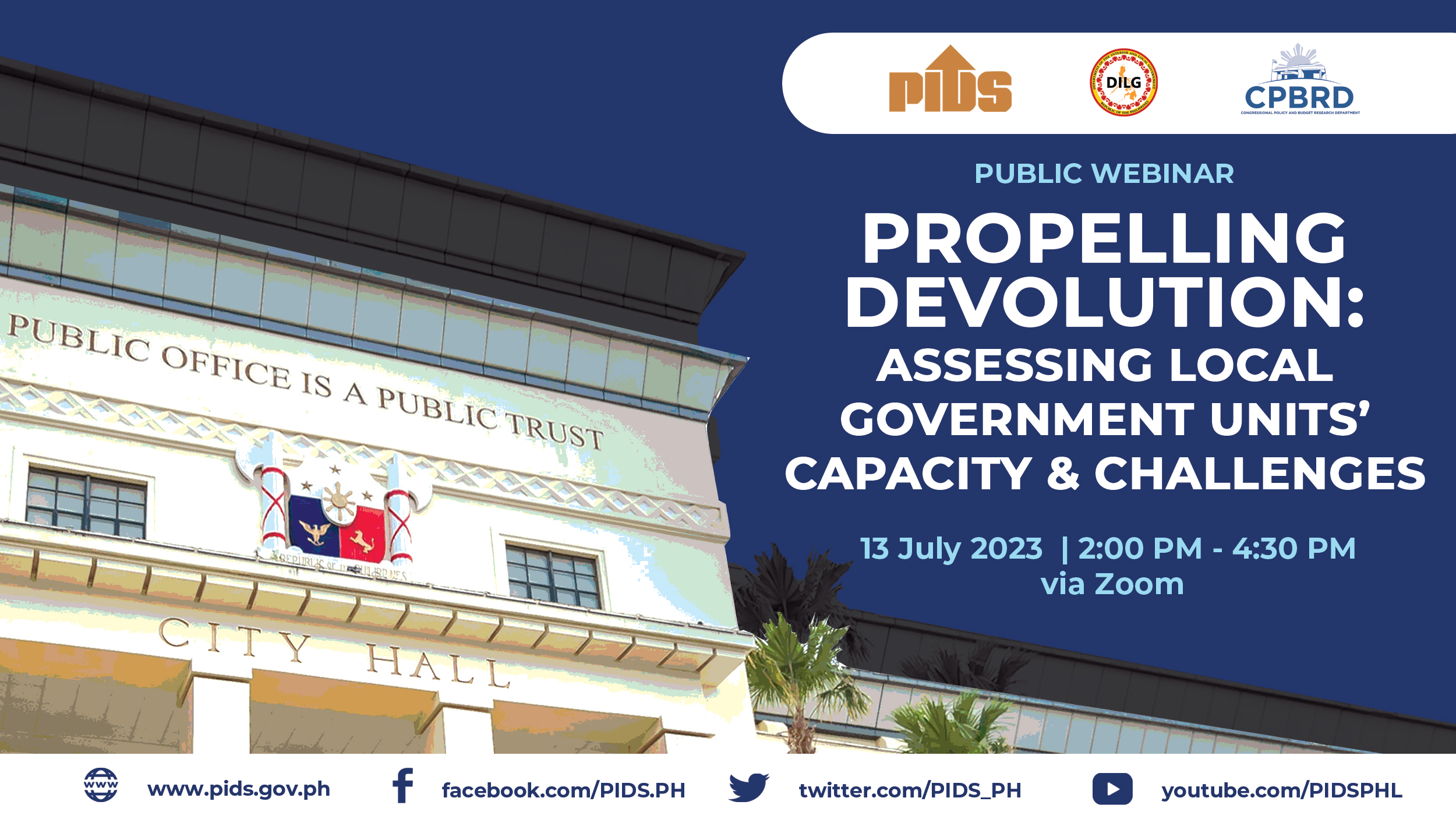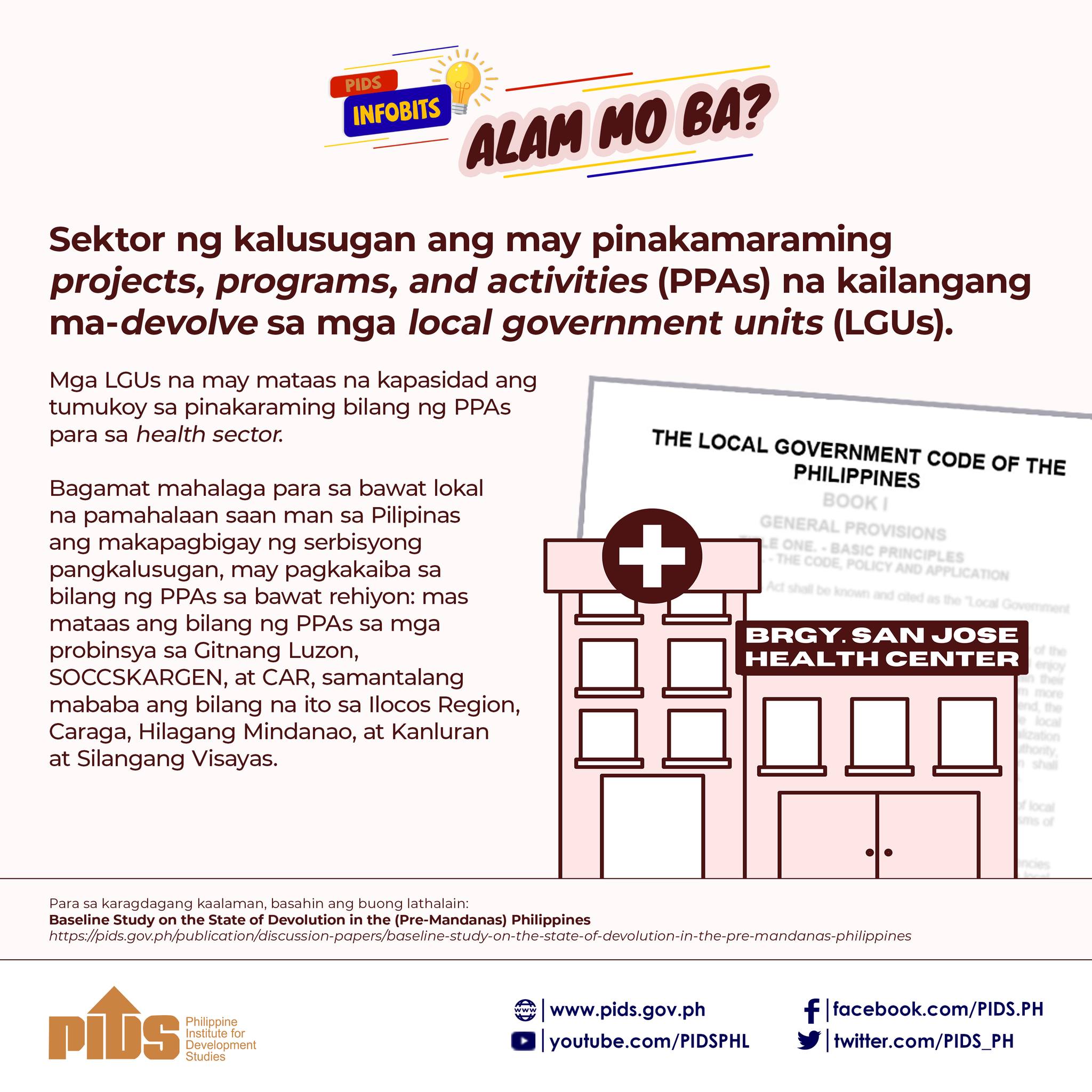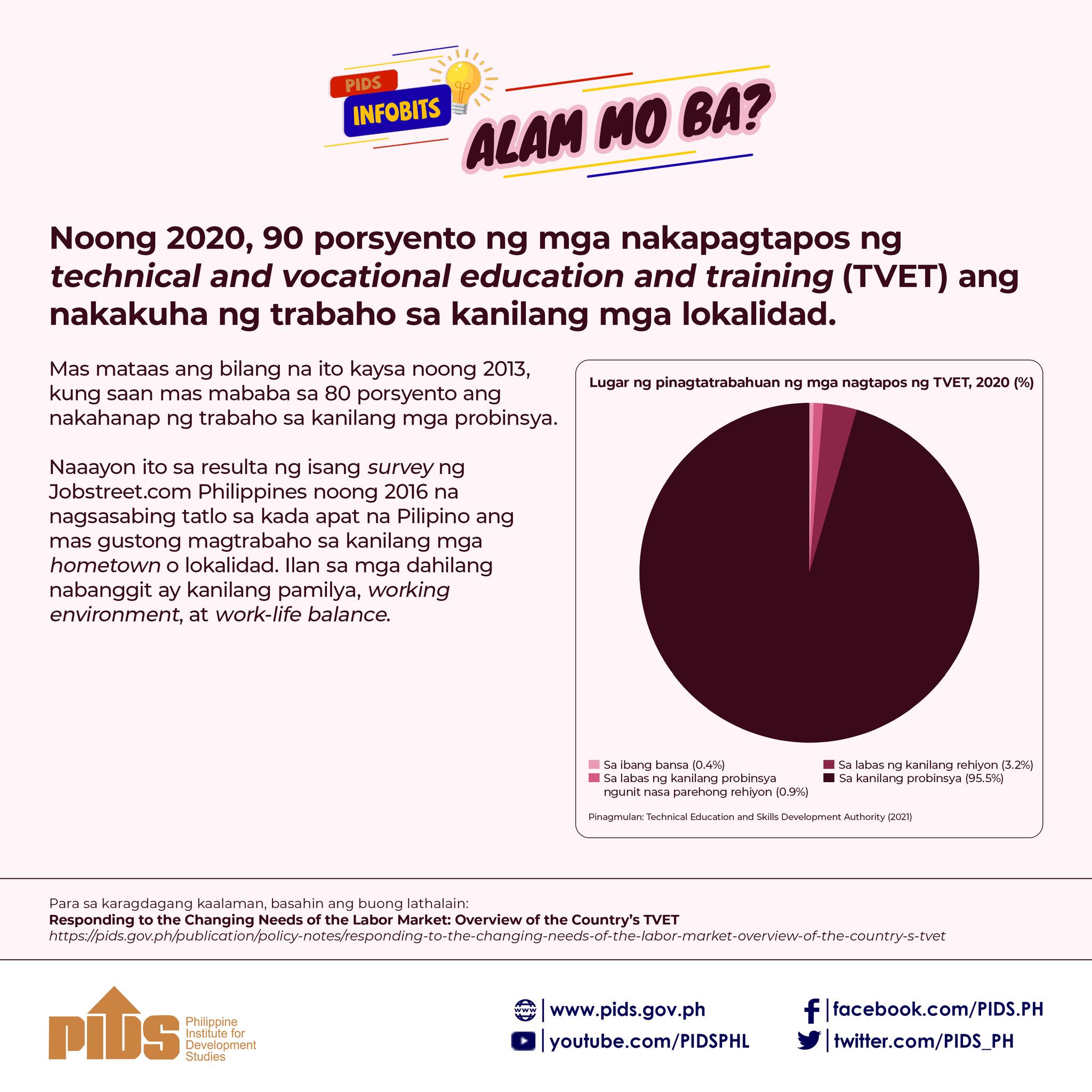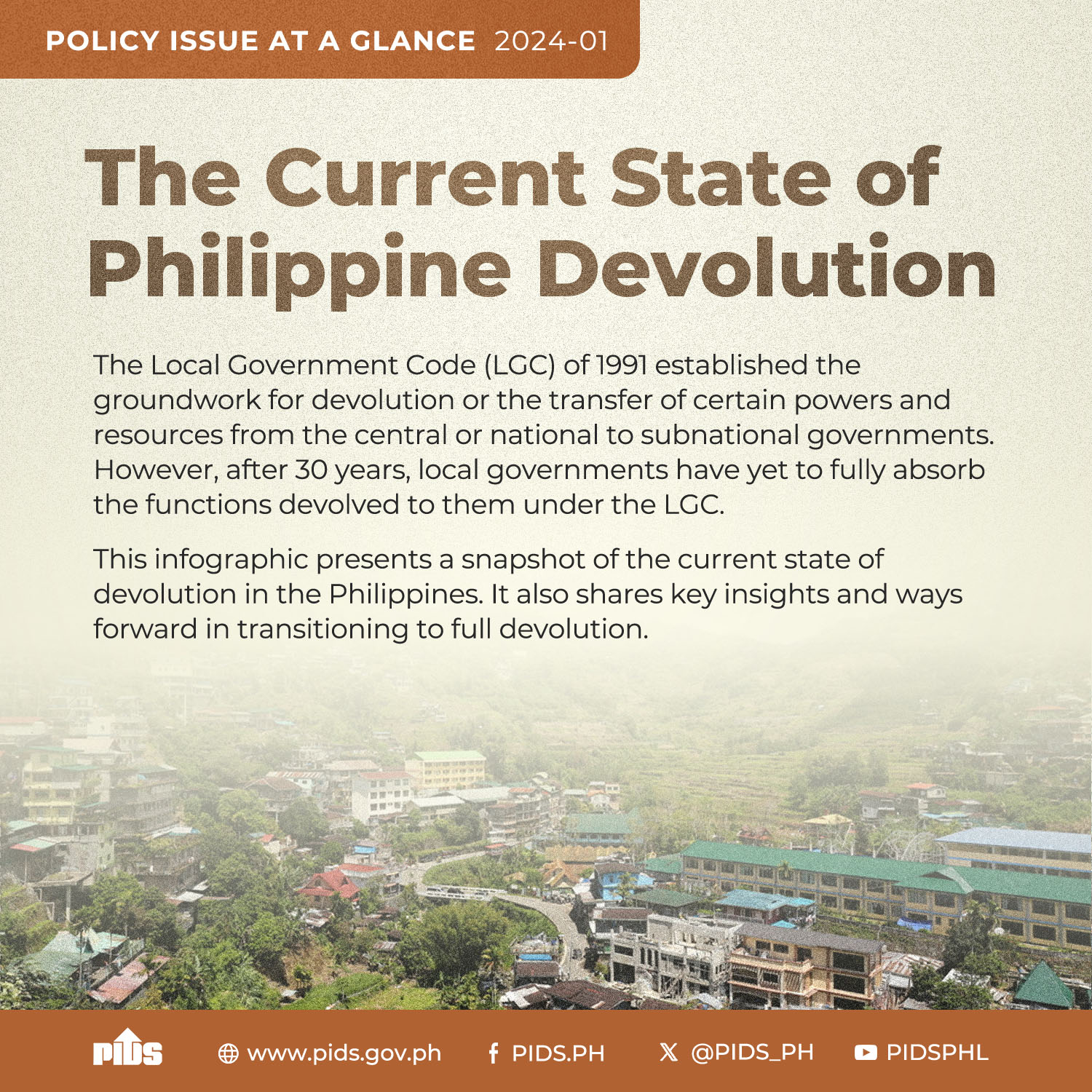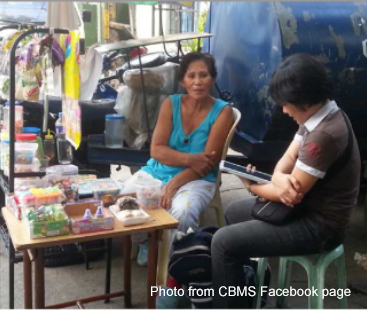
Majority of municipalities in the country use the Community-Based Monitoring System (CBMS) in development planning, a study of state think tank Philippine Institute for Development Studies (PIDS) titled “The Community-Based Monitoring System (CBMS) as a local planning tool: Results from the PIDS-DILG baseline study on policy and governance gaps for the Local Government Support Fund Assistance to Municipalities (LGSF-AM) Program" revealed.
The CBMS is “a diagnostic tool to assess poverty in the barangay, municipal, city and provincial levels developed in the early 1990s under the Micro Impacts of Macroeconomic Adjustments Policies Project – Philippines”.
According to the authors of the study, namely, PIDS Research Fellow Charlotte Justine Diokno-Sicat, former Supervising Research Specialist Catharine Adaro, and Research Analyst Ricxie Maddawin, more than half of the 1,373 municipalities surveyed said they used the CBMS as a major data source in preparing or updating their ecological profiles.
Ecological profiling is a crucial step in formulating the comprehensive development plans (CDP) of local government units (LGUs), which is mandated under the Local Government Code of 1991.
The Department of the Interior and Local Government (DILG) defines the CDP as a “document that contains the multi-sectoral plan formulated at the city or municipal level, which embodies their visions, sectoral goals, objectives, development strategies, and policies within the medium-term”. Ecological profiling, on the other hand, pertains to the process of identifying major issues and concerns in LGUs as well as probable interventions to address them.
Based on interviews with members of the planning team of each municipality, the top three “mostly used” data items in the CBMS are demography (96.4%), water and sanitation (96.2%), and education and literacy (96.0%). The least used categories are data on access to programs (78.0%), climate change (76.6%), household member who died (73.3%), and political participation (57.0%).
Majority of the respondents (90.4%) also claimed that the CBMS helped them identify priority sectors such as urban poor (79.0%), persons with disabilities (78.5%), farmers and landless rural workers (77.0%), children (61.8%), and women (60.1%).
While there is a positive feedback on the use of CBMS in LGU development planning, there are still areas for improvement.
One such area is the regularity of data collection. The prescribed frequency of data collection under the recently passed CBMS Law is every three years.
According to the study, more than half of the municipalities (58.1%) collect CBMS data every three years while the others gather data every year (17.8%) and every five years (14.8%), respectively. A small proportion (3.9%) reported to have conducted CBMS only once.
Another aspect is regular budget allocation for data collection and hiring of personnel for CBMS implementation.
The study found “a declining trend between the number of times a budget was allocated for data collection activities and the number of municipalities that conducted the CBMS. That is, there are fewer municipalities that allocate budget more frequently for data collection.”
The LGUs rely mainly on their internal revenue allotment in financing data collection. Other top budget sources also include the local disaster risk reduction and management fund, local development fund, and the provincial fund.
Under the CBMS Law, financial and technical assistance shall be provided by relevant national government agencies to LGUs, particularly 4th to 6th income-class municipalities, to enable them to collect data every three years.
The study likewise emphasized the need to revisit and enhance the development planning processes of LGUs, particularly on the use of dataset tool for ecological profiling.
“Contrary to the DILG planning guidelines prescribing the use of the Local Development Indicator System and the Rationalized Planning Indicator and Data Set for ecological profiling, the CBMS is the most frequently used dataset tool,” it noted, adding that CBMS data are also used “for budget preparation and priority setting”.
The study also underscored the need to clearly delineate roles in data processing and analysis.
With the institutionalization of the CBMS Law, the conduct of reorientation sessions for LGUs and CBMS users is also encouraged to update them of the features of the tool, and how to use and access CBMS data. ###
The CBMS is “a diagnostic tool to assess poverty in the barangay, municipal, city and provincial levels developed in the early 1990s under the Micro Impacts of Macroeconomic Adjustments Policies Project – Philippines”.
According to the authors of the study, namely, PIDS Research Fellow Charlotte Justine Diokno-Sicat, former Supervising Research Specialist Catharine Adaro, and Research Analyst Ricxie Maddawin, more than half of the 1,373 municipalities surveyed said they used the CBMS as a major data source in preparing or updating their ecological profiles.
Ecological profiling is a crucial step in formulating the comprehensive development plans (CDP) of local government units (LGUs), which is mandated under the Local Government Code of 1991.
The Department of the Interior and Local Government (DILG) defines the CDP as a “document that contains the multi-sectoral plan formulated at the city or municipal level, which embodies their visions, sectoral goals, objectives, development strategies, and policies within the medium-term”. Ecological profiling, on the other hand, pertains to the process of identifying major issues and concerns in LGUs as well as probable interventions to address them.
Based on interviews with members of the planning team of each municipality, the top three “mostly used” data items in the CBMS are demography (96.4%), water and sanitation (96.2%), and education and literacy (96.0%). The least used categories are data on access to programs (78.0%), climate change (76.6%), household member who died (73.3%), and political participation (57.0%).
Majority of the respondents (90.4%) also claimed that the CBMS helped them identify priority sectors such as urban poor (79.0%), persons with disabilities (78.5%), farmers and landless rural workers (77.0%), children (61.8%), and women (60.1%).
While there is a positive feedback on the use of CBMS in LGU development planning, there are still areas for improvement.
One such area is the regularity of data collection. The prescribed frequency of data collection under the recently passed CBMS Law is every three years.
According to the study, more than half of the municipalities (58.1%) collect CBMS data every three years while the others gather data every year (17.8%) and every five years (14.8%), respectively. A small proportion (3.9%) reported to have conducted CBMS only once.
Another aspect is regular budget allocation for data collection and hiring of personnel for CBMS implementation.
The study found “a declining trend between the number of times a budget was allocated for data collection activities and the number of municipalities that conducted the CBMS. That is, there are fewer municipalities that allocate budget more frequently for data collection.”
The LGUs rely mainly on their internal revenue allotment in financing data collection. Other top budget sources also include the local disaster risk reduction and management fund, local development fund, and the provincial fund.
Under the CBMS Law, financial and technical assistance shall be provided by relevant national government agencies to LGUs, particularly 4th to 6th income-class municipalities, to enable them to collect data every three years.
The study likewise emphasized the need to revisit and enhance the development planning processes of LGUs, particularly on the use of dataset tool for ecological profiling.
“Contrary to the DILG planning guidelines prescribing the use of the Local Development Indicator System and the Rationalized Planning Indicator and Data Set for ecological profiling, the CBMS is the most frequently used dataset tool,” it noted, adding that CBMS data are also used “for budget preparation and priority setting”.
The study also underscored the need to clearly delineate roles in data processing and analysis.
With the institutionalization of the CBMS Law, the conduct of reorientation sessions for LGUs and CBMS users is also encouraged to update them of the features of the tool, and how to use and access CBMS data. ###

